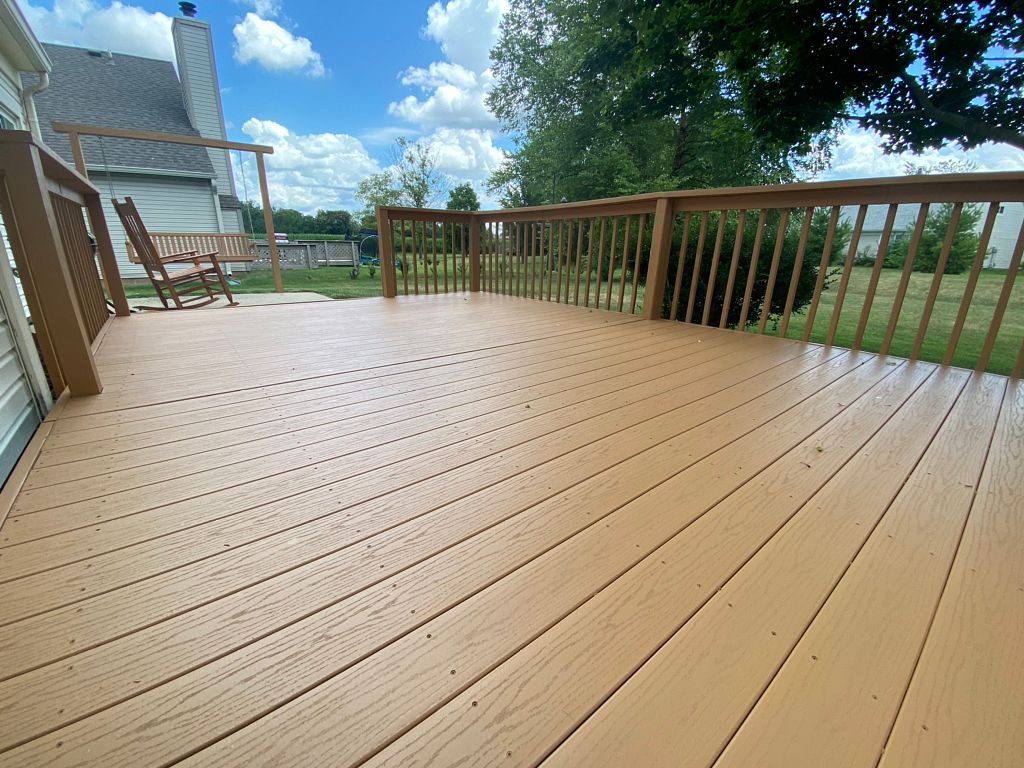Stain VS Paint. Similarities and differences. Pros and cons.
I was staining our deck on a hot August weekend with a solid color stain. As with all ONiT projects, I was using a quality Sherwin-Williams product. Our teenage daughter asked me why I was painting the deck. I explained that it was a stain with pigment-tint added. “Sounds like paint,” she said. I agreed. It definitely looks like paint. That got me thinking that I should do a post on stain vs paint.
Let’s talk about exteriors and start with the similarities between paint and stain.
- Both have a “vehicle” (sometimes referred to as a carrier), either water or oil.
- And both usually have pigment. In a quality paint, this is a premium hiding pigment like titanium dioxide. There are other pigments and adjuncts out there, and many of these fillers break down sooner, affecting appearance and protection.
- Lastly, paints and stains have binders, a resinous ingredient that surrounds and protects the pigment and influences a range of performance characteristics. Sherwin-Williams breaks down the characteristics of a quality paint very well, here.
The differences lie in the volume and balance of the ingredients.
- Stain is more vehicle (water or oil) and therefore soaks into the surface.
- Paint has more body – more pigment and binder – and tends to sit on top of the surface.
- Because stains have more “vehicle/carrier,” there are fewer color choices available. Much of stain’s work is enhancing or highlighting the existing surface.
- Because paint has less water or oil, there are a wider and deeper range of high quality color choices available.
Pros of Paint
- Paint generally goes on thicker and is a bit easier to get a full coating. It comes in more colors, so if you’re trying to enhance your curb appeal for sale or create a fence line, picket that accentuates the style and detail of your home, paint is a good choice.
- Paint also gives you more options for sheen and finish (think high gloss, matte and so on).
- Paint is also a little more forgiving. it can be painted over.
- If your surface is older, paint can fill in the cracks and cover up some of the age and weathering. It’s worth noting that a stain with more pigment/tint can also provide some of this filler effect.
- The bottom line, paint is uniform and provides a clean, modern look suitable for most home exteriors as well as some fences, furniture or even decking projects.
Pros of Stain
- Stain is often what we think of when we think of decks. Decks generally take a beating with loads of foot traffic (including pets!) as well as direct exposure to harsh sunlight and weather. For this reason and because of a desire to show the rustic and natural qualities of decking material, stain is a natural choice for a deck.
- If you want to eke out a couple more years with the same boards, go with a more opaque stain to fill in some of those cracks and provide a uniform look that is reminiscent of when it was first installed.
- Stain generally goes on lighter. And while you may be able to do the job in one coat, you could be surprised by how much of it soaks into the wood or other surface. This is by design. The manufacturer will often recommend more than one coat. A single coat of stain, if it’s relatively transparent, will do a great job accenting the surface material itself. This is equally true of stains on cedar siding or an Adirondack chair. Show off the grain and natural beauty of the wood itself with stain. As a quick aside, there are also great concrete stains out there for walkways, patios and driveways.
Sometimes, you may want to include both paint and stain on a project. ONiT prides itself on picking the right product for the job. Part of that is through our consultative process, and part of is through our experience and belief in using only the highest quality product. If you’re doing it on your own, do not shortchange the crucial step of preparation. Whether stain or paint, you’ll want to clean and strip the surface, sand, repair, replace boards if necessary and possibly prime.
P.S. If you’re picking a new color for paint, don’t forget to check with your HOA to be sure it is compliant.





